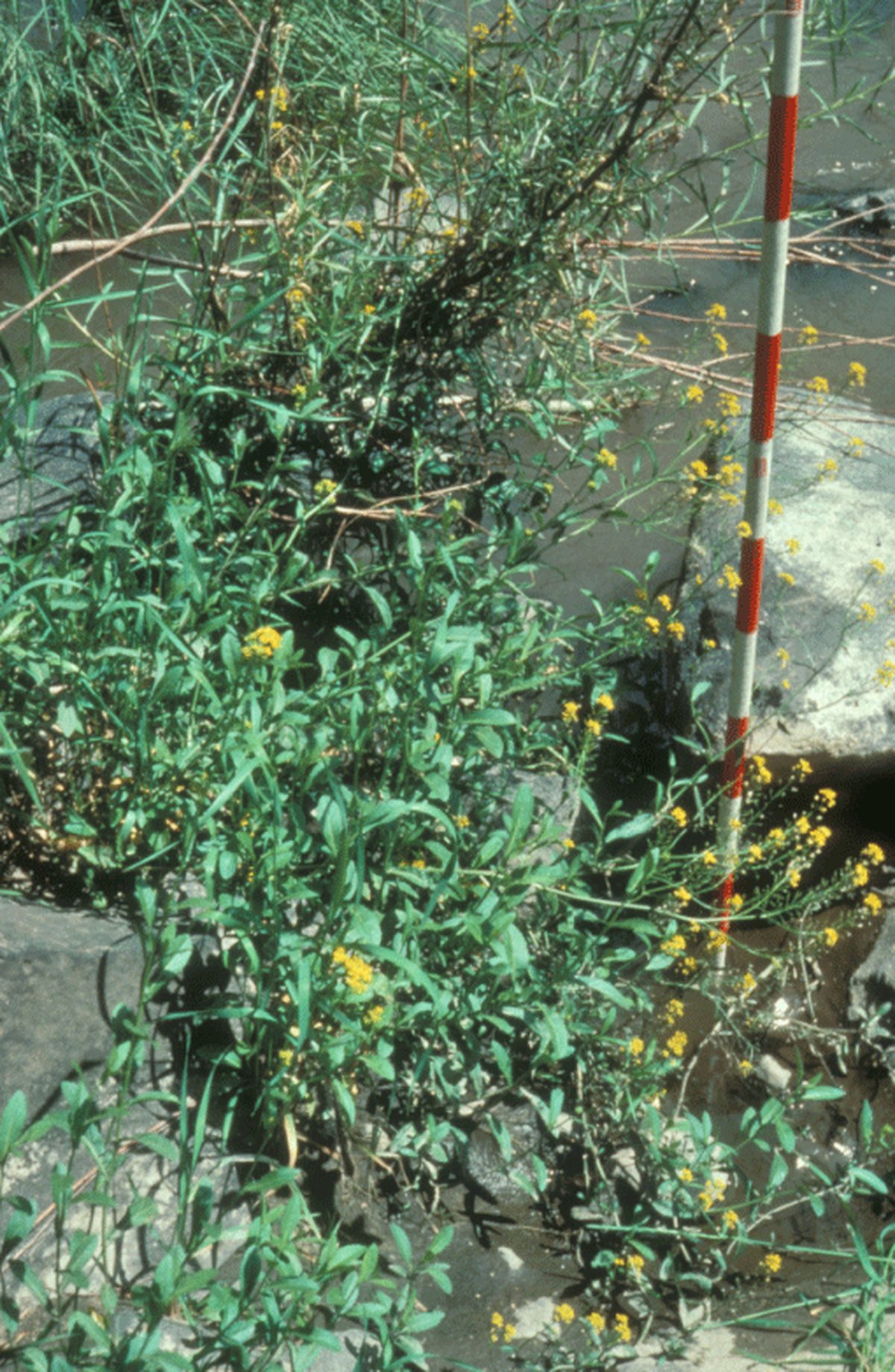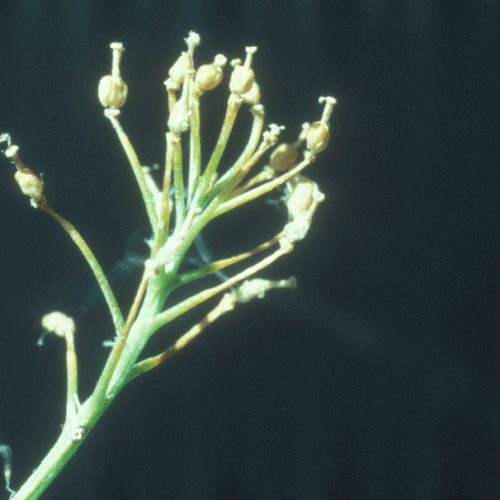Austrian Fieldcress
Rorippa austriaca

Family: Brassicaceae
Other Common Names: Austrian yellowcress
Weed class: C
Year Listed: 1989
Native to: Europe and Asia
Is this Weed Toxic?:
not known to be
Why Is It a Noxious Weed?
Austrian fieldcress invades pastures and cultivated fields. It competes with native plants and desirable forage. Austrian fieldcress was changed from a Class B to a Class C noxious weed in 2013.
How would I identify it?
General Description
Austrian fieldcress is a perennial herb in the mustard family which grows from 20 to 40 inches tall.
Flower Description
The flowers are formed on racemes (elongate, unbranched cluster of flowers). They have four yellow petals and are 1/8 inch diameter.
Leaf description
The leaves are alternately arranged on the stems and are simple (not compound). Lower leaves with petioles and large teeth or lobed (pinnatifid) margins and middle to upper stem leaves have toothed to smooth margins.
Stem description
Upright stems are branched near the tips and usually hairless.
Fruit Seed Description
It forms globular seed pods that contain small, reddish brown to black, rough seeds.
Where does it grow?
Austrian fieldcress is found in waste areas, roadsides, cultivated fields and pastures. Please click here to see a county level distribution map of Austrian fieldcress in Washington.
How Does it Reproduce?
Austrian fieldcress reproduces by seed, creeping roots and from rootstalks.
How Do I Control It?
Mechanical Control
Small infestations can be controlled by repeated cultivation or hand digging. Large infestations can be killed by summer fallow.
Cultural Control
Planting competitive crop species such as alfalfa and sweet clover can be effective at controlling fieldcress.
Herbicide Control
Please refer to the PNW Weed Management Handbook, or contact your county noxious weed coordinator.
For More Information
See our Written Findings for more information about Austrian fieldcress (Rorippa austriaca).




